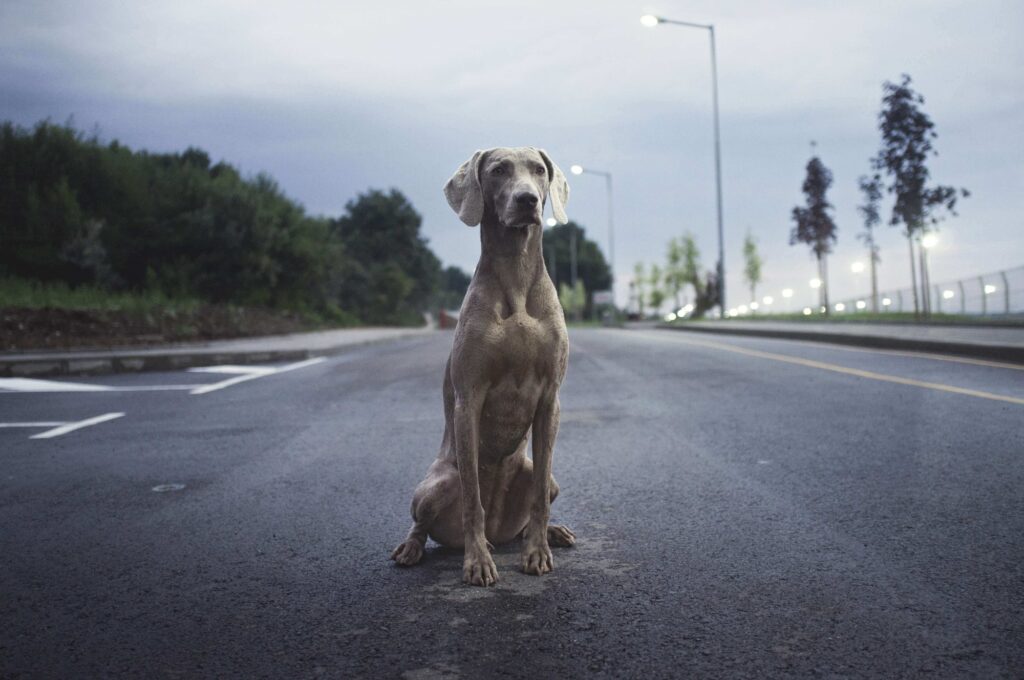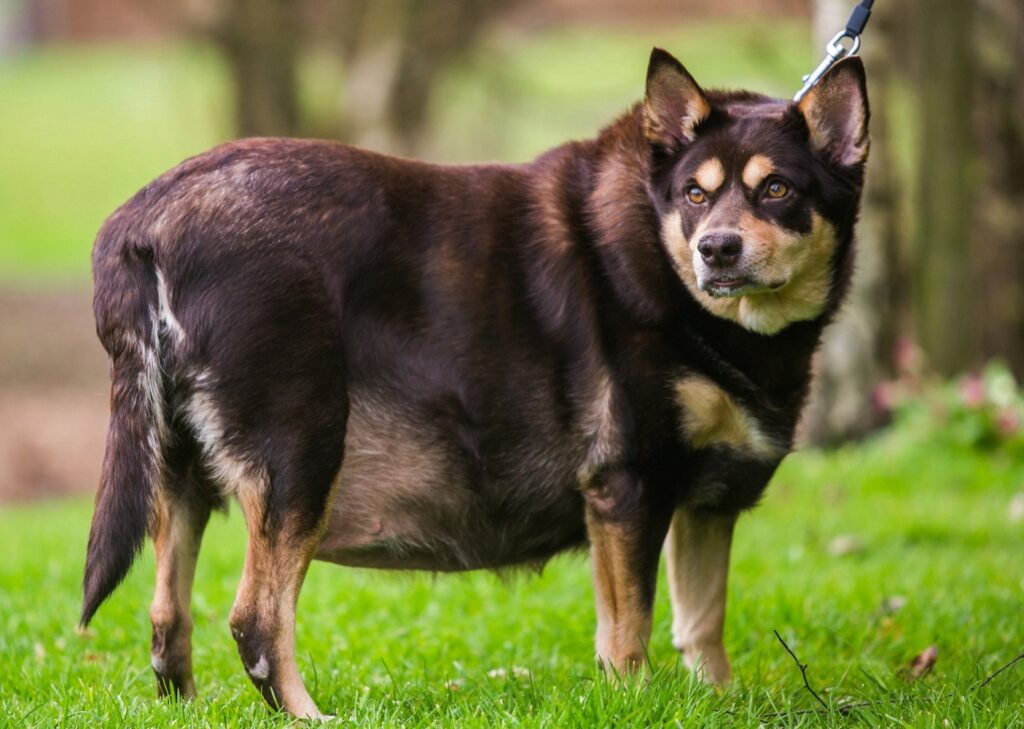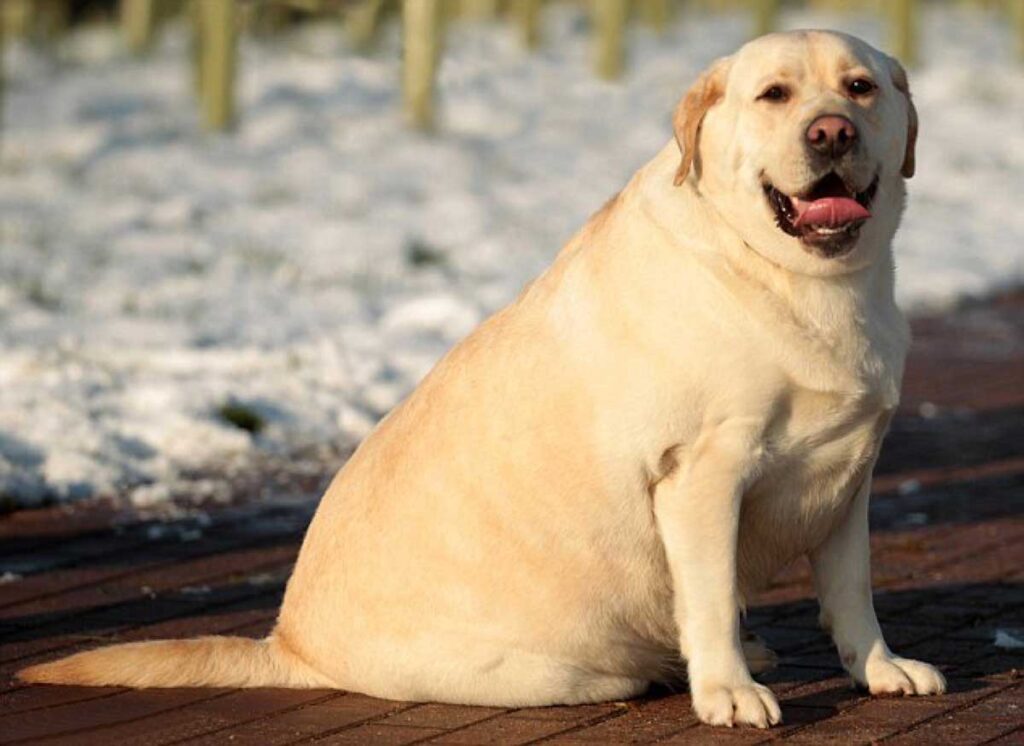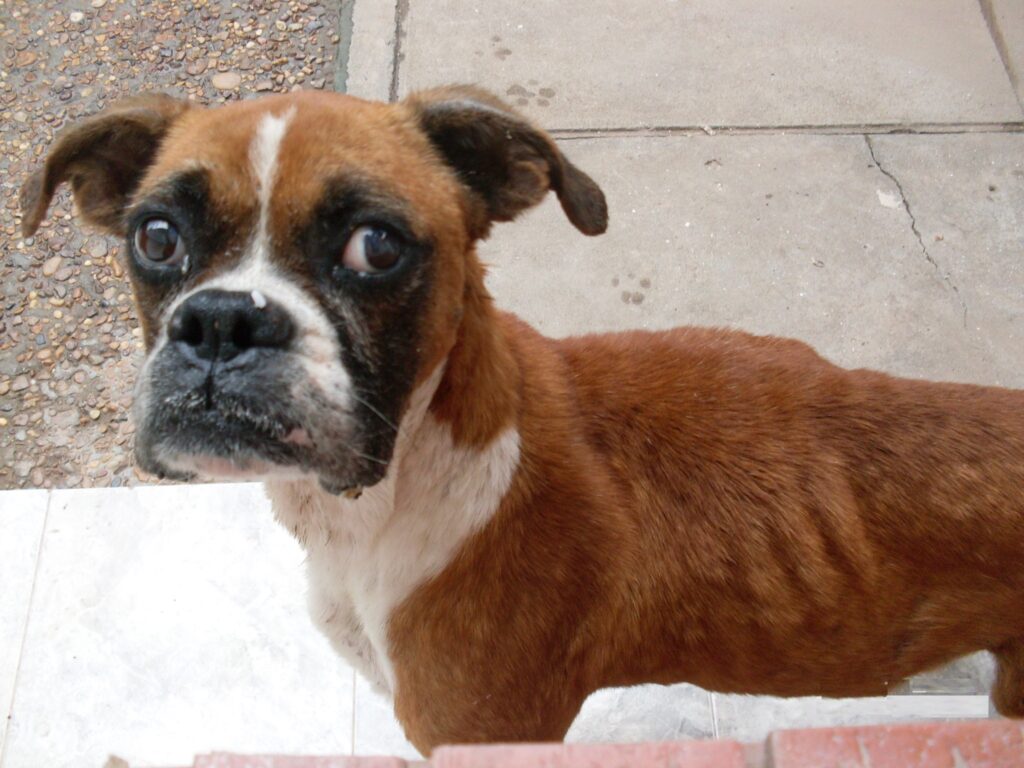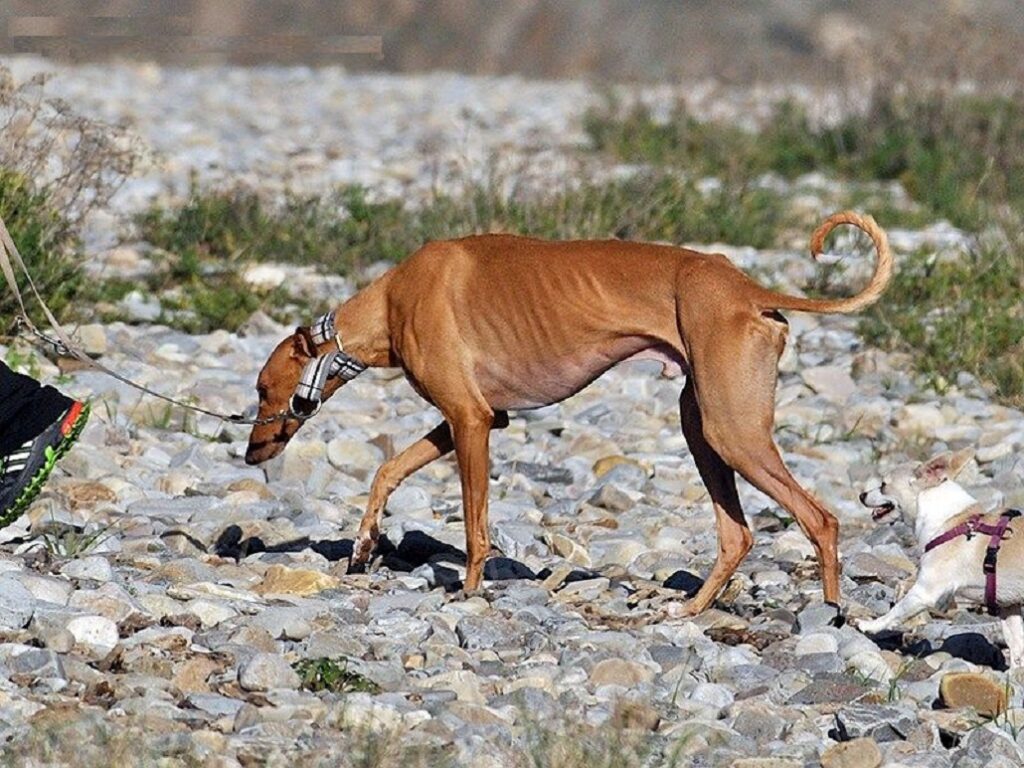We all want a healthy dog with an ideal weight, but we are worried about seeing it very fat since we know that obesity is not very benign. But what happens if our pet is very skinny? An underweight dog is also a sign of poor health, and that is not resolved by stuffing it with food or changing its diet. So how to fatten up a dog?

How to Fatten a Dog?
Despite the fact that obesity is a fairly common problem in dogs today, there are also dogs with the opposite inconvenience. Your dog may look very thin because he doesn't eat enough, or because he disproportionately consumes his energy or because he comes from a place where he wasn't cared for and fed properly.
Helping your dog to obtain an ideal weight is an important task, since a very skinny dog is an extremely delicate issue and getting him to gain weight can be somewhat difficult, therefore you should not worry as there are solutions for your dog. fattening
If your dog has become very skeletal, you will have to learn the proper practices to "fatten him up". The key to making your dog fat is to feed him small, frequent meals, provide him with supplements to make up for any dietary deficiencies, and ensure he has been properly dewormed. However, if your dog has little appetite, you can't explain why he loses weight, suffers from diarrhea or seems to be sick, it is advisable to have him seen by a veterinarian.
Regardless of the reason, it is of great importance to ensure that the dog maintains its weight in a healthy range, since this will help to guarantee proper development and a very long life.
Determine Cause of Weight Loss
If you already know the reason why your dog is underweight, as was the case with a bitch who recently gave birth to a litter of strong, gluttonous puppies, or a dog who has recovered from abuse, then make him put on weight It would be something simple. You want to make sure you keep track of the underweight dog so that you can recognize any easily resolved problems. For example, if you have multiple dogs, a likely response might be that the other dogs are eating the underweight dog's ration.
Assess Your Dog's General Health
Any kind of disease can impair the body's ability to process food and use its nutrients, resulting in weight loss. If this is the case, the dog will surely show some signs, including loss of appetite, increasing thirst, lack of energy, vomiting, diarrhea or an alteration in its bodily appearance.
Conditions that can trigger weight loss include a lack of pancreatic enzymes, diabetes mellitus, liver or kidney disease, cancer, and inflammatory bowel disease. If you perceive any of these symptoms, it is best to visit the veterinarian.
Have a Vet Check It Out
If you feel that your dog is sick or if you perceive a weight loss that you cannot explain, the most appropriate thing is to go to the veterinarian. If your dog suddenly shows inappetence for no obvious reason, it is also best to consult an expert before the problem gets out of hand. When the veterinarian indicates that there is no serious problem and you understand that you only have a fussy dog, you will have a variety of strategies that will surely help you increase his appetite.
Adjust the Number of Calories You Give
It is easier to consider a dog to be underweight, when it could certainly be somewhat lighter than an obese dog of the same breed. Maybe your dog is fine, but maybe the other dog finds it too fat!
Check the Food Packaging Ingredients
If your dog is thin in appearance, but has great energy and produces solid stools, the first step to consider is that he is receiving plenty of calories per meal. A dog can lose weight because he expends more calories than he consumes. This can be simple, like when the dog is not eating enough. If this is the case, we can proceed to increase the size of your food portion.
The easiest way to do this is to equate your dog's ideal weight with the portion of food that is recommended on the package of the food to be provided. If your dog belongs to a particular breed, you can get abundant information on the internet about the appropriate weight for any breed. Select the weight you want for your dog, instead of indicating the weight that he has at this moment, and a portion size will be suggested to give him. For example, if you have a male Labrador, an average size weight is about 40 kilograms.
Compare your food with what is recommended
Calculate the usual portion of your dog's daily ration according to its weight. Record the weight of that portion and then compare it to the amount suggested on the food package. It's important to note that some of these suggestions actually exceed what the dog requires by 25% (usually offering a generous portion, rather than a meager one).
If you are going to provide your dog with 400 grams of croquettes daily and the packaging suggests giving 500 grams a day, this means that you are feeding your dog 20% fewer calories than recommended, so he will have to lose weight. This can be easily rectified by increasing the amount of your daily food portion.
Decide How Much You Will Increase the Food Ration
This can result in a very difficult decision, since each food provides different amounts of calories and the size of dogs is also very variable. As a general rule, increase the amount of food by no more than 10% of the initial amount.
Therefore, if you were feeding your dog 400 grams per day, an additional 10% adds another 40 grams, which you will have to divide into two meals, each with added amounts of 20 grams. Put this feeding scheme into practice for 2 or 3 days and check that the dog does not have diarrhea. After which, you can add another 10% and so on.
Gradually Increase the Amount of Food
Suddenly giving your dog a lot more food will upset his intestinal balance and cause diarrhea. Proceeding more safely, the size of the portion will have to be gradually increased and the dog's stools inspected to verify how it adapts to the new feeding scheme.
If the disparity in the ration is not significant, separate the amount added into two meals. If the difference is large, add an additional meal (instead of increasing the size of the portions you already give him) which will be more appropriate for intestinal care. If the dog has diarrhea, he will lose valuable nutrients and your efforts will be in vain.
How to Fatten a Dog? Change your Diet?
Liver is one of the foods richest in vitamin B12. You can provide your dog with cooked beef or chicken liver two to three times a week, as a snack between meals. For example, the amount that a 10 kilogram dog is fed is 50 to 70 grams of cooked liver.
Eggs also contain a high content of vitamin B12. Added to this, it has enough vitamin A, riboflavin, folate, vitamin B12, iron, selenium and fatty acids. Provide your dog with raw eggs, adding one to his dog food three times a week. You have to keep in mind that these foods should be added gradually, so that they do not cause an upset stomach.
Give your Dog Food with High Energy Value
High energy dog food is made up of high calorie content and can be ingested and assimilated by the body much more easily. With it, the dog will be prevented from losing weight and showing an emaciated appearance, and it will help to give your thin dog an additional weight. America's quality brands include Hill's Science Diet High Energy and Royal Canin's Veterinary Diet High Energy.
You can also try swapping your dog's food for one designed for puppies. Puppy food contains more calories than normal food, as it is made to meet the high energy requirements of developing puppies. It is important to highlight as disadvantageous the circumstance that puppy food is usually abundant in calories and can cause stomach upset in certain dogs.
Provide it gradually, adding a spoonful to the food you are currently feeding, and progressively increasing the amount you give every 4 or 5 days. The dog's feces must be supervised and if it presents diarrhea, this new food will be stopped.
Swap Wet Food for Dry Food, or Vice Versa
Imagine eating the same dry food, the same preparation or the same soup every day; possibly you would get sick of it. Dogs would also suffer a similar boredom with their food. Sometimes, alternating his dry canned food with one of some moisture, or the opposite, would help and cause your dog to start eating again.
However, keep in mind that canned food has fewer calories than dry food. For the same number of dry croquettes, a wet food contains barely a quarter of the amount that they supply, in such a way that a modest dry croquette corresponds to a considerable amount of wet food. This is because wet food is made up of 60 to 80% water; therefore, despite being more exquisite, there is a risk of filling the dog's stomach with water and supplying insufficient calories.
Veterinarian Approved Home Recipes
Feeding your dog based on your homemade recipes can add variety to his diet, making him more interested in his food. Here we offer you a recipe that is original to Founder's Veterinary Clinic, located in Brea, California. This recipe is recommended for a 10-kilogram dog and you can separate it in two for a 5-kilogram dog, or the amount could be doubled for a 20-kilogram dog.
This homemade dog recipe consists of 100 grams of cooked skinless chicken, 1 cup of cooked brown rice, 1 cup of peas and carrots, 1 tablespoon of vegetable oil and 1/4 teaspoon of salt replacement. All these ingredients have to be cooked and combined. Other recipes such as chicken and rice dog food or a raw food regimen are available.
Ensuring the Basic Health of your Dog
The B vitamins participate primarily in the enzyme systems that increase your dog's appetite and in the energy transformation of fats, proteins and carbohydrates. In short, they enable the conversion of energy sources such as fats, proteins and carbohydrates, offering your pet the fuel they require for their development and maintenance.
The surplus of energy caused by the increase in appetite and consumption will later be transformed into fats and will prevent the catabolism of the muscles, or their wear and tear. In the United States, the best vitamin B complexes include Pet-Tabs and LC-Vit. You have to make sure you follow the instructions on the packaging. In the case of puppies, the use of liquid multivitamins such as LC-Vit (3 milliliters per day) is recommended.
Another alternative is to take your dog to a professional and have them inoculate him with B-complex vitamins, if you don't have enough time to give him daily vitamin supplements. The regimen is based on injection, once every seven days for four weeks. If, after the end of this period, the dog's appetite has not increased, it is possible that a greater number of injections will not give any benefit.
Deworm it with an Appropriate Medication
It is advisable to frequently deworm your dog, since parasites compete for food throughout your dog's digestive system and cause damage to its body situation, silently extracting nutrients from your dog. Ironically, a dog with a massive amount of parasites may have a bulging belly, but his entire rib cage and hips that have lost their fat cover stand out from a distance.
Select a broad-spectrum dewormer that has an effect on all classes of parasites. Praziquantel (Canex) is a good model of an extended-range dewormer. In the case of medium-sized dogs, you can use Canex supplying one pill for every 10 kilograms of body weight. In even larger dogs, Canex can be used at a dosage of one pill per 20 kilograms of body weight.
For the tiniest dogs, half a pill of Canex for medium-sized dogs can be given. If it is the first time you are going to deworm your dog, you can give him the pill three times with a two-week break. From the first occasion, you can carry out this deworming process every six months or even annually.
Give your Dog Energy Supplements
Dogs that are highly active, work, nurse, travel frequently, or are adjusting to a new home often lose weight and lose their appetite. These dogs can be provided with energy supplements that are made up of easily absorbed carbohydrates and vitamins. A popular example of an energy supplement is Nutri-Plus Gel, which can be given to your dog as 1 to 2 teaspoons per 5 kilograms of body weight or 10 centimeters (3,9 inches) of gel daily (using the plastic gel applicator or the supplied dispenser).
Warnings
It is important not to overfeed your dog. Dogs that become obese usually have more health problems. If you follow these steps and your dog still does not gain weight, you should drive him as soon as possible for a veterinary check-up.
Possible Causes of Weight Loss
The reasons that have caused weight loss in your dog are very diverse. Among the most frequent are: a diet with a lack of nutrients, the existence of parasites, the stress of the animal in a particular situation, among other conditions. Below we will delve into each of them.
Intestinal parasites
When a dog suffers from intestinal parasites, it tends to lose weight drastically in a short period of time. The extreme thinness originates from the theft of nutrients that the parasites carry out every time that the dog makes a meal. However, parasites can also cause swelling, so extreme weakness can often be hidden behind a bulging belly. It is of great importance that you inspect your pet closely and see if the ribs are noticeable. Thus, it is necessary to go immediately to the veterinarian.
nervousness or stress
Although this is one of the most difficult causes to recognize, they are usually the most frequent. Changes in the dog's environment or habits can have a negative impact on it, so much so that it can show a loss of appetite due to nervousness, stress or depression. As a general rule, this is more evident when a separation has occurred and the dog is grieving.
A Poor or Improper Diet
A diet lacking in nutrients or not composed of those that your dog requires most is a frequent cause of weight loss. If you reach this point, it is essential to follow the advice of the veterinarian to adapt the diet or supplement it with some other type of food.
Tricks to Fatten a Dog
Depending on the characteristics of the dog's breed, its ideal weight will fall within one range or another. In case you do not know exactly this information, it is required to consult it with the expert. When a dog is not in his healthy weight range, owners should give him the help to gradually recover. And what does this imply? Help you 'fatten up' until you reach the appropriate body mass index and fat.
There are dogs that, by natural nature, have a fine build and, therefore, a slim appearance. But if your dog always has a normal weight and has suddenly lost weight, it is necessary to find the cause and give it an immediate solution. Here are other ideas to get your dog to gain weight.
Quality Food
Sometimes the amount of food is not relevant, but the quality, this also does not mean that you have to buy the most expensive. But it does denote that you have to worry about finding those alternatives that provide comprehensive nutrition that offers a balanced diet to the dog. Those foods containing between 12 and 23% protein per serving will become a good choice for dogs. Proteins can also be obtained from meats and fats, but you should not overdo them.
There are specific foods to help sick dogs gain weight that are also a good alternative, since they are fortified with vitamins and minerals that your body requires. Once the meal is finished, you must have a nutrient-rich feed on hand so as not to deteriorate the diet again.
Make Food More Appetizing
If you usually give your dog dry food and you have noticed that he does not love it very much, you can try pouring hot water over his food, then wait for it to cool down and then give it to him. Many dogs find dry food more appetizing by applying this modest trick. If you notice that it is still not to his liking, change the feed to a wet food that he loves more, and thus we encourage him to eat to try to increase his weight.
Vegetable Enzyme
The vegetable enzyme is usually prescribed by veterinarians in very particular cases. It usually comes in the form of a tablet, capsule or paste. It works by helping to replenish and maintain the health of the dog's digestive system, in addition to increasing the amount of nutrients that the dog can assimilate each time he eats.
Meal Frequency
When adding quantity, it is important that you add a food for your dog to eat throughout the day on a regular basis. If your dog used to eat once a day at night, add a meal in the morning, if your dog already has two meals, add a third meal at noon.
Even if you can, it is better to eat 3 or 4 meals a day instead of 2 large meals: so that you digest foods more easily and metabolize nutrients more efficiently by eating small but more frequent meals. Ideally, no more than 6 hours should elapse between two meals. As your dog is thinner it is more significant that he receives small portions but more frequently.
Keep in mind that by increasing the number of foods that your dog eats and therefore their schedules, you also modify their requirements for eliminating feces, which will also require a small adjustment in the walks they take daily. This activity is very useful to prevent stomach torsion.
Water is very important
A proper diet must be supplemented with adequate water intake. If you do not consume enough water, the dog's body will not be able to function properly and the assimilation of nutrients will not be able to be achieved effectively. It is essential to maintain an adequate supply of fresh water for the dog, so that he can drink it whenever he requires it.
Physical Exercise
It could be perceived as contradictory to suggest physical exercise for a dog that needs to gain weight: certainly physical activity burns calories but it is beneficial because it enables your dog to build muscle instead of just gaining weight by storing fat.
In addition to this, physical exercise increases canine appetite. We recommend that you increase your physical activity very gradually and without overdoing it as you add calories to your meals. But keep in mind that your dog has to digest more calories than he expends in order to gain weight. The process of getting your dog to gain weight can be a time-consuming process that requires patience and modest changes in your habits and your dog's to help him achieve a healthy weight.
Keep a Weight Diary
Now that you know that your dog does not suffer from any disease, you will be able to start some changes in his diet and lifestyle to contribute to his weight gain. In the meantime it is highly recommended to keep a record of his meals, treats, physical activity and his weight from day to day. In such a way that if his weight goes down or up, you will be able to verify it and objectively see the reasons for these variations, thus adopting a weight gain program.
You have to be attentive to the recommendations of the veterinarian and, in a short time, you will be able to restore your dog's health. Keep in mind that it is better to spend time and do things patiently than to expect an improvement overnight.
How to Fatten a Dog? What's more…
You can complement all of the above by offering small treats to your dog from time to time. When your dog practices obedience and follows commands correctly, it's a wonderful opportunity to give him small treats. Intelligence games that dispense food are also useful and stimulate his mind.
Here are some other interesting articles:
